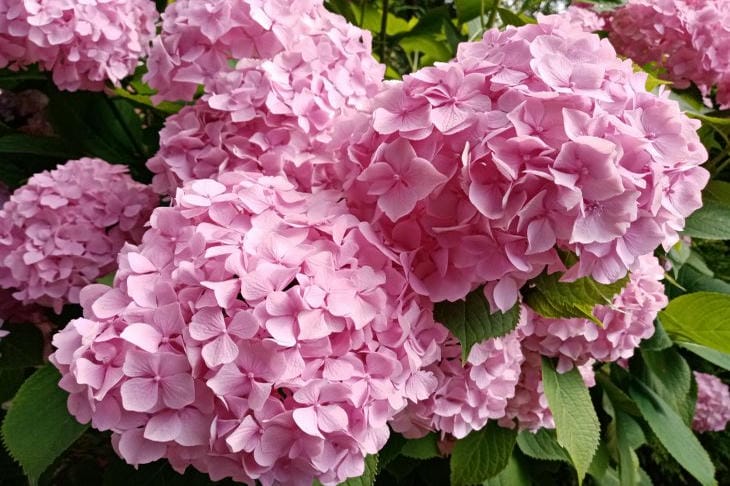- Hydrangea – the queen of acidic soils
- Azalea and rhododendron – connoisseurs of acidity
- Blueberries and bilberries are berries that love sourness
- Camellia is a refined lover of acidic soils
- Gardenia is a capricious beauty
- Magnolia – a majestic tree with a love for sourness
- Ferns – forest dwellers in your garden
- Rules for the use of citric acid
Which Plant Loves Citric Acid: Unexpected Favorites for Your Garden
Citric acid is not only a culinary ingredient, but also an unexpected helper in gardening.
Some plants literally flourish from its presence in the soil.
Surprisingly, this simple food supplement can be the key to lush flowering and abundant fruiting of certain crops.
Hydrangea – the queen of acidic soils
Hydrangea is known for its love of acidic soils, and citric acid can become a real growth elixir for it. This beautifully flowering shrub is especially responsive to fertilizing with citric acid.
If you regularly use a citric acid solution, you can maintain the optimal soil acidity level for hydrangea. This will help achieve a brighter and more saturated color of the inflorescences.

Azalea and rhododendron – connoisseurs of acidity
Azalea and rhododendron are also plants that prefer an acidic environment. Citric acid helps create ideal conditions for their growth and flowering.
Adding a citric acid solution to the soil around these plants promotes better absorption of nutrients and prevents leaf chlorosis, which often occurs with iron deficiency in alkaline soils.
Blueberries and bilberries are berries that love sourness
Blueberries and bilberries are berry crops that respond particularly well to soil acidification. Citric acid helps create optimal conditions for the development of the root system of these plants, which leads to increased yields and improved taste of the berries.
Regular use of citric acid as a fertilizer can significantly increase the productivity of blueberry and bilberry bushes.
Camellia is a refined lover of acidic soils
Camellia, known for its gorgeous flowers, also prefers acidic soil. Citric acid helps maintain optimal pH levels when caring for camellia. This, in turn, promotes more lush blooms and healthy growth of the plant.
In addition, citric acid improves the absorption of iron, which prevents yellowing of camellia leaves.
Gardenia is a capricious beauty
Gardenia is famous for its demanding growing conditions, and one of the key factors is soil acidity.
Citric acid can be a great help in creating the ideal environment for gardenia.
Regular application of citric acid solution helps maintain the required pH level, which promotes healthy growth and abundant flowering of this beautiful plant.
Magnolia – a majestic tree with a love for sourness
Magnolia, despite its majestic appearance, also prefers slightly acidic soils.
Using citric acid in caring for magnolia helps to create optimal conditions for the growth and flowering of this beautiful tree.
Acidifying the soil promotes better absorption of nutrients and more vibrant flowering of magnolia.
Ferns – forest dwellers in your garden
Many species of ferns, accustomed to the forest litter with its natural acidity, respond well to citric acid feeding.
The use of a citric acid solution helps to create conditions close to the natural habitat of ferns, which contributes to their more lush growth and brightly colored leaves.
Rules for the use of citric acid
When using citric acid to feed plants, it is important to use in moderation.
It is recommended to dissolve 1-2 teaspoons of citric acid in 1 liter of water and use this solution no more than once a month.
Before applying the fertilizer, the soil should be well moistened to avoid burning the roots. It is also important to consider that not all plants like an acidic environment, so the use of citric acid should be selective.
